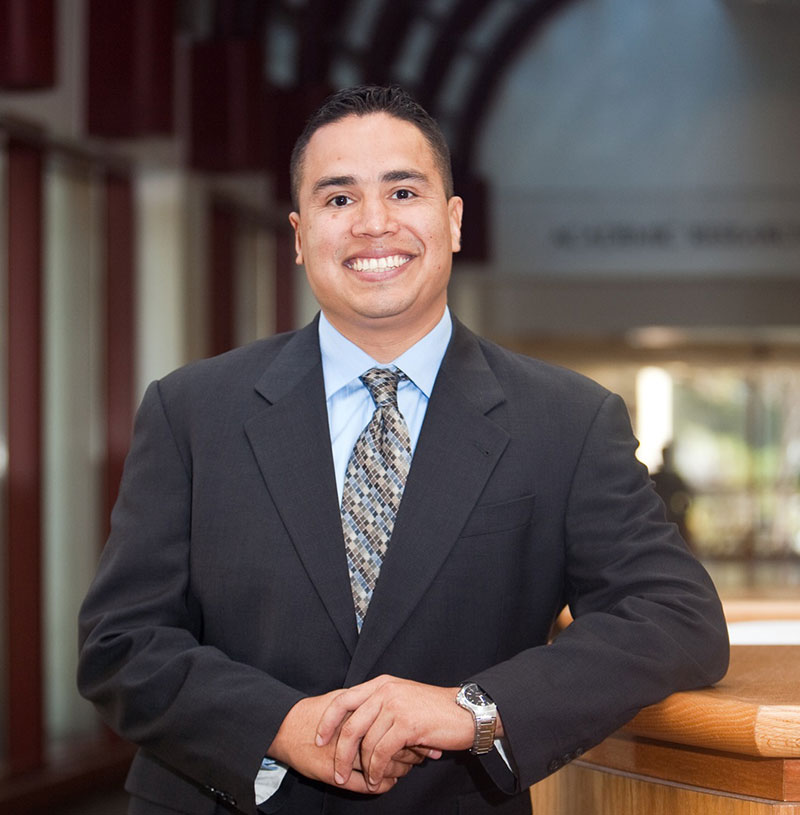
Share On Social!
This is part of the “Advancing the Science of Cancer in Latinos: 2022 Conference Proceedings,” which summarizes findings and discussions of the 2022 Advancing the Science of Cancer in Latinos Conference on Feb. 23-25, 2022, in San Antonio, Texas.
Novel Therapeutic Approach to Reduce Health Disparity in B-cell Acute Lymphoblastic Leukemia in Hispanic/Latino Children
Dr. Sinisa Dovat is Professor of Pediatrics, Pharmacology, and Biochemistry and Molecular Biology at Pennsylvania State University College of Medicine. He is also Four Diamond Endowed Chair and Director of Translational Research and Experimental Therapeutics in Pediatric Hematology/Oncology at Penn State University.
B-Cell acute lymphoblastic leukemia and Hispanic children

B-Cell acute lymphoblastic leukemia (B-ALL) is the most common childhood malignancy. Although B-ALL is 80% to 90% curable, more children die of B-ALL than any other malignancy. Survival is less than 50% for relapsed ALL, and this has not changed in over 40 years. Young Hispanic children are 1.2-1.75 times more likely to develop ALL than their non-Hispanic White counterparts, and Hispanic adolescents are 2.09 times more likely. Hispanic children also have a 40% higher death rate than non-Hispanic White children after correcting for socioeconomic factors.
The importance if IKZF1 deletion in B-ALL
In 2021, Dr. Dovat and colleagues published a study demonstrating that IKZF1 (Ikaros) deletion is the key genetic alteration in B-ALL in Hispanic/Latino children. Among children with B-ALL from Los Angeles Children’s Hospital, Hispanic/Latino children were two times more likely to have IKZF1 deletion compared to all others, and three times more likely if over the age of ten. Unfortunately, IKZF1 deletion is associated with an 8-to-10-fold increase in relapse rate.
When considering IKZF1 deletion concomitant with IGH-CRLF2 translocation, these patients were almost exclusively Hispanic/Latino. Approximately 60% of the Hispanic/Latino group had IKZF1 deletion alone, while approximately 40% of the group had both IKZF1 deletion and IGH-CRLF2. Dr. Dovat hypothesized that IKZF1 deletion occurred first, followed by IGH-CRLF2 translocation in some.
Improving Ikaros expression through CK2 inhibitors
Because IKZF1 deletion is a key driver of high-risk B-ALL in Hispanic/Latino children, Dr. Dovat set out to target the Ikaros-regulated signaling pathways that control leukemia progression and drug resistance. Ikaros binds the promoter of the mTOR gene, leading to reduced mTOR transcription when Ikaros is expressed, and increased mTOR transcription when Ikaros is inhibited. CK2 kinase, which regulates Ikaros DNA binding by phosphorylation, is overexpressed in almost every malignancy, particularly leukemia. When Ikaros is phosphorylated, it does not bind DNA, leading to impaired tumor suppression. CK2 inhibition, however, restores Ikaros function in high-risk B-ALL, therefore decreasing mTOR transcription.
Using patient-derived xenografts from Hispanic/Latino children with high-risk B-ALL, Dr. Dovat assessed the use of CX-4945, a CK2 inhibitor, in conjunction with rapamycin, an mTOR inhibitor. In this approach, a patient’s tumor cells were injected into immuno-incompetent mice, and therapeutic combinations were assessed. The mice with patient-derived xenografts that were treated with either CX-4945 or rapamycin survived longer than the control mice, while those treated with a combination of therapies survived longer still.
In a similar approach, the use of CX-4945 was assessed in conjunction with doxorubicin, a chemotherapy drug used for high-risk leukemia. Ikaros inhibits expression of the BCL-XL gene, which is known to increase resistance to doxorubicin, so CK2 inhibition by CX-4945 should increase Ikaros expression, therefore decreasing BCL-XL facilitated doxorubicin resistance. The two drugs were found to be synergistic, and the combination of CX-4945 and doxorubicin led to improved survival in the mice with xenograft from Hispanic/Latino children with high-risk B-ALL.
The future of IKZF1 research
These promising results indicate many directions for further study. For example, it is important to understand why IKZF1 deletion occurs more frequently in Hispanic/Latino children. Furthermore, the reasons why IKZF1 deletion predisposes Hispanic/Latino children to IGH-CRLF2 translocation must be understood. How basic science discoveries can be used to design new treatments must also be explored.
To answer these questions, Dr. Dovat suggested using functional molecular epidemiology to integrate genomics and functional epigenomics with outstanding computational biology/bioinformatics. Rationally designed, targeted combination treatment could also be used to implement basic science discoveries, targeting specific signaling pathways, and designing more efficient and less toxic therapies.
Dr. Dovat concluded his presentation by emphasizing the need for collaboration and funding. Cancer is the leading cause of death by disease for children under the age of 19 in the US, and NIH allocates just 4% of the National Cancer Institute’s annual budget to childhood cancer research. More high-risk B-ALL samples are needed to create pre-clinical models of B-ALL, and collaboration with pediatric institutions serving Hispanic/Latino children in the US and South America is imperative.
Overcoming Disparities in Cancer Care: The Importance of Clinical Trials
Dr. Gladys I. Rodriguez is a medical oncologist with the START Center for Cancer Care with special interest in access to care for cancer patients. She also serves on the American Society of Clinical Oncology (ASCO) Board of Directors and previously served in the Health Disparity Committee and the Workforce Advisory Committee. In 2021 she co-founded a Conquer Cancer Young Investigator Award for Latina Research.
The changing landscape of clinical trials

Dr. Rodriguez began her presentation by defining clinical trials as research studies in which people volunteer to help find answers to specific health questions. In the world of oncology, these trials address effectiveness of medications, survival, side effects, mechanisms, quality of life, and more. In general, Phase I trials assess dosage or side effects, Phases II and III look at specific activity and then compare that to an already approved treatment, and Phase IV trials focus on a larger population after a drug has been approved.
Over the past decades, drugs have been approved at a faster rate and at earlier phases of development than ever before; and a large portion of these are oncology drugs. While about 1601 clinical trials were conducted in 2015, 6,442 trials were conducted in 2021, 2,426 of which were early phase trials.1 Of the almost 60 new drugs approved by the FDA in 2021, 20 were new oncology drugs.2
In Phase I clinical trials from 2013 to 2017, however, only 2.8% of participants were Hispanic/Latino, compared to 84.2% White participants. Furthermore, in trials for oncology drugs approved by the FDA from 2008 to 2018, of the 70,201 patients who reported their racial background, only 630 were Hispanic.3 Among clinical trials sponsored by Pfizer in the areas of cardiology, hematology, endocrinology, and nephrology almost 80% had Hispanic/Latino participation at or above US census levels; however, only 6.5% of oncology trials achieved this benchmark.4
A four-part plan addressing trial participation inequity
The first strategy Dr. Rodriguez proposed to address this inequity was improved access to studies. A recent analysis showed that 49% of presenting cancer patients had no clinical study available to them, 18% were ineligible to participate, and 19% chose not to participate, leaving only 14% of these patients participating in clinical trials.5 In order to reverse this trend, it is imperative to identify and open studies at institutions with diverse patient populations that mirror community demographics. Patient navigators and outreach programs can also help bridge the gap between studies and patients, providing information, connection, and communication. The most important aspect of improving access, however, is listening to patient voices, acknowledging their problems, and addressing concerns by changing the design of the study.
The second focus to improve disparity in participation is the trial design itself. In order for clinical research to be accessible, affordable, and equitable, trials must allow for more flexible inclusion criteria. For example, in a recent proposal to broaden trial eligibility criteria for patients with advanced non-small cell lung cancer, proposed updated FDA regulations would approve over 10,000 participants compared to around 5,500 under traditional eligibility requirements.6 Trials can also be simplified, streamlined, and standardized to allow for virtual consent, remote assessments, reduced unnecessary visits, or visits at local providers.7
The third approach to improve trial participation is identifying and resolving biases. Provider assumptions prevent many patients from being informed about clinical trials for which they would otherwise be eligible. Programs to identify and resolve providers’ biases towards minorities are currently being established to address this problem. Diversity promotion among providers and researchers, and patient education programs about clinical research and importance are also underway. These efforts, however, must be undertaken at every level of the clinical trial system, from institutions, to communities, to professional societies.
The final strategy for improving equity in trial participation is removing economic and social barriers. This begins with advocating for coverage of clinical trial participation for all patients. Patients should be provided with adequate economic compensation for time, travel, and lost wages. Improved study designs can also be helpful, making participation easier through decreased frequency of visits, decreased length of visits, virtual visits, and more. Finally identifying and partnering with community resources can drastically improve participation.
The plan in action
In concluding her presentation, Dr. Rodriguez shared a real-world example of these strategies in action at the START Cancer Center in San Antonio. In their early Phase I oncology drug development program in 2021, of the 400 patients who participated in Phase I clinical trials 36% were of Hispanic or Latino ethnicity. This compared to 40% Latino patients in the cancer center in general. The deliberate implementation of the four-part plan demonstrates the success of these strategies to improve participation and inclusion in clinical research.
References
- 2021 Oncology Report. Evaluate Pharma, 2021.
- US FDA. 2021 OCE Annual Report. Content current as of August 18, 2022. Accessed October 14, 2022. https://www.fda.gov/about-fda/oncology-center-excellence/2021-oce-annual-report
- Camidge DR, Park H, Smoyer KE, et al. Race and ethnicity representation in clinical trials: findings from a literature review of Phase I oncology trials. Future Oncol. 2021;17(24):3271-3280.
- Rottas M, Thadeio P, Simons R, et al. Demographic diversity of participants in Pfizer sponsored clinical trials in the United States. Contemp Clin Trials. 2021;106:106421.
- Unger JM, Cook E, Tai E, Bleyer A. The role of clinical trial participation in cancer research: barriers, evidence, and strategies. Am Soc Clin Oncol Educ Book. 2016;35:185-198.
- Harvey RD, Bruinooge SS, Chen L, et al. Impact of broadening trial eligibility criteria for patients with advanced non-small cell lung cancer: real-world analysis of select ASCO- Friends recommendations. Clin Cancer Res. 2021;27(9):2430-2434.
- Pennell NA, Dillmon M, Levit LA, et al. American Society of Clinical Oncology Road to Recovery Report: learning from COVID -19 experience to improve clinical research and cancer care. J Clin Oncol. 2021;39(2):155-169.
Developing Cancer Drugs for All: A Regulatory Perspective
Dr. Lola Fashoyin-Aje is a medical oncologist and Deputy Division Director in the Division of Oncology 3 (DO3) in the Office of Oncologic Diseases (OOD) at the Food and Drug Administration (FDA). She is also Associate Director in the Science & Policy Program to Address Disparities at the Oncology Center for Excellence (OCE).
Diversity in clinical trials

Dr. Fashoyin-Aje’s presentation focused on two main points: demographic representation in cancer trials and addressing barriers to clinical research participation. Inclusivity in clinical trials is important to increase access to potentially promising drugs which may represent a treatment option in situations where no other options are available. Clinical trial diversity can also generate data to inform the safety and effectiveness of drugs, which may differ across subgroups.
Although typically thought of in terms of race and ethnicity, Dr. Fashoyin-Aje’s definition of diversity is broad and inclusive, covering race, ethnicity, age, sex, gender, geography, underserved populations, and more. Part of this broader understanding is recognizing the limitations of parameters used. Race, for example, does not necessarily denote biological differences that are exclusive to that particular race or ethnicity. Rather, the goal is to increase overall variability in study population in order to evaluate differential drug response.
A dearth of diversity in clinical trials
In a recent analysis of clinical trials for 40 new drugs approved for the treatment of solid tumor malignancies over a six year period of time, 20,000 patients were included. Of those patients, 49% were from Europe and 31% were from North America, while only 2% were from South America, less than 1% was from Africa, and there was no representation from Central America. Only 4% of participants identified as Hispanic when asked about ethnicity, with almost 40% of the ethnicity data not collected or reported.
Factors that contribute to this disparity are multifaceted and include societal factors such as bias, racism, ageism, socioeconomic disparities, global inequities, and more. Biases in the health care system are also evident through disparities in access, site or investigator selection practices, clinical trial-related costs, lack of awareness, and communication practices. Trial-specific factors, such as eligibility criteria and burdensome procedures, contribute to inequity as well.
Strategies for inclusion
Strategies to promote equity in clinical trial representation must be intentional, prospective, specific, consistent, and accountable. The FDA’s Oncology Center for Excellence (OCE) seeks to embody these values through patient, community, and external engagement, as well as in the realms of policy development and research. One focus area is the establishment of clear expectations for clinical trials regarding representation of demographic groups that are historically inadequately represented.
To this end, OCE provides guidelines focusing on how to collect and present data on race and ethnicity. Broadly speaking, guidelines include developing a prospective diversity plan, broadening clinical trial eligibility criteria, simplifying trial procedures and operations, and prioritizing diversity in the context of global drug development.
Specific OCE guidelines
According to these guidelines, a diversity plan should begin with an understanding of the epidemiology of the disease, including clinical characteristics, populations with increased case burden, and populations with increased death burden. Enrollment goals should then reflect that epidemiology to represent a diversity of minority groups, reflecting differences in race, ethnicity, age, sex, and more. The plan for enrolling that diverse population should address issues of site location, financial access, disability access, patient and community engagement, and reduction of trial design burdens.
Broadening eligibility criteria can greatly increase diversity in a clinical trial and allow the trial to serve the patients instead of the patients serving the trial. Trial design is also important, allowing flexible study assessments and using technology to assess patients remotely. The use of local laboratory, imaging, and health care teams can increase participation as well.
In closing, Dr. Fashoyin-Aje summarized the strategies for diversity in clinical trials. The development and implementation of a prospective plan is key to ensuring diverse representation in clinical research. This allows increased access to clinical research, generates data that reflects a diverse US population, and improves the generalizability and applicability of study results. This strategy should also include specific goals across the full spectrum of clinical research, reflect a cross-discipline approach with full integration, and include metrics to facilitate accountability.
What We Don’t Know Might Hurt Us: The Impact of Racial and Ethnic Minority Underrepresentation in Cancer Clinical Trials
Dr. Jose Trevino is Chair of the Division of Surgical Oncology at the Virginia Commonwealth University (VCU) School of Medicine, as well as Surgeon-in-Chief of the Massey Cancer Center.
Pancreatic cancer and diversity in clinical trials

Despite common ancestry, there is great diversity within the Latinx community, a community that is expanding. Furthermore, by 2060 minority populations will make up 50% of the US population, indicating how quickly diversity is rising in the country as a whole. Dr. Trevino began his presentation by posing the question, “why is diversity in clinical trials important?”
To answer this question, he spoke of pancreatic cancer, which is predicted to be the number two cancer killer in the US by 2030. After a diagnosis with pancreatic cancer, only about 25% of patients will receive surgical resection, and only 5-8% will achieve five-year survival. These poor outcomes are due to the deadliness of the disease, the frequency of late diagnosis, and the difficulty of treating a constantly changing disease. Furthermore, pancreatic cancer affects certain populations more than others.
Variability of pancreatic cancer outcomes
Pancreatic cancer is a systemic disease, partially due to the release of cytokines and proteins which can lead to cancer cachexia, or muscle and energy loss. As movement and energy are lost, the ability to tolerate treatment is lost, which can lead to earlier death. It is known that Black pancreatic cancer patients tend to have poorer outcomes than White patients. Dr. Trevino and colleagues found that this disparity could be due to greater muscle loss from cachexia in Black patients.
Interestingly, Latinx pancreatic cancer patients tended to have better outcomes than either White or Black patients. Furthermore, within the Latinx population, Dominican and South Central American patients fared the best. This survival disparity according to origin disappeared, however, when considering only neuroendocrine pancreatic tumors. These types of tumors followed the more expected trend of socioeconomic factors as predictors of disease outcomes. These studies and others like them demonstrate the importance of studying different cancer types as independent entities and treating them accordingly.
When considering treatment, minimally invasive approaches have a benefit for survival. White patients in the US, however, are offered these minimally invasive options more often. Clearly, differences in pancreatic cancer outcomes based on ancestry or socioeconomic status, as well as differences in treatments based on racial and ethnic background, reveal the importance of diversity in clinical research.
Disparities in clinical trial representation
From 2008 to 2018, 80% of clinical trial participants in the US were White. Studies specific to breast, prostate, lung, colorectal, and pancreas cancers all showed similar disparities, despite many of these cancers exhibiting increased risk in minority populations. Inclusion and exclusion criteria for many of these trials, found on clinicaltrials.gov, provide insight into why so few minorities are represented. Uncontrolled diabetes, HIV, and previous cancers were all listed as exclusion criteria for many trials, despite medical advances making many cases easily controllable. The fact that these conditions affect certain ethnic groups more than others may be one reason minorities are underrepresented.
A surprisingly simple solution
After consulting with many oncologists, Dr. Trevino’s group came up with updated inclusion criteria for these clinical trials. Hepatitis B and C, which are curable, were no longer reasons for exclusion. Previous cancers, diabetes, and HIV were considered acceptable as well. Under these updated guidelines, participant demographics were almost balanced.
In closing, Dr. Trevino emphasized the importance of research that differentiates populations within the Latinx community in order to understand disease risk more fully. Patients’ biospecimens should be diversified to more specifically identify patient ancestry; the deeper the ancestry can be elucidated the better. This differentiation has led to interesting areas of research focus in Dr. Trevino’s lab, including answering the question of why Dominican pancreatic cancer patients have such good outcomes. Diversity in Latinx ancestry knowledge coincides with a need for diversity in clinical trials. Expanding inclusion and exclusion criteria represents a practical step that can immediately increase inclusion of minorities in the research setting.
By The Numbers
142
Percent
Expected rise in Latino cancer cases in coming years



